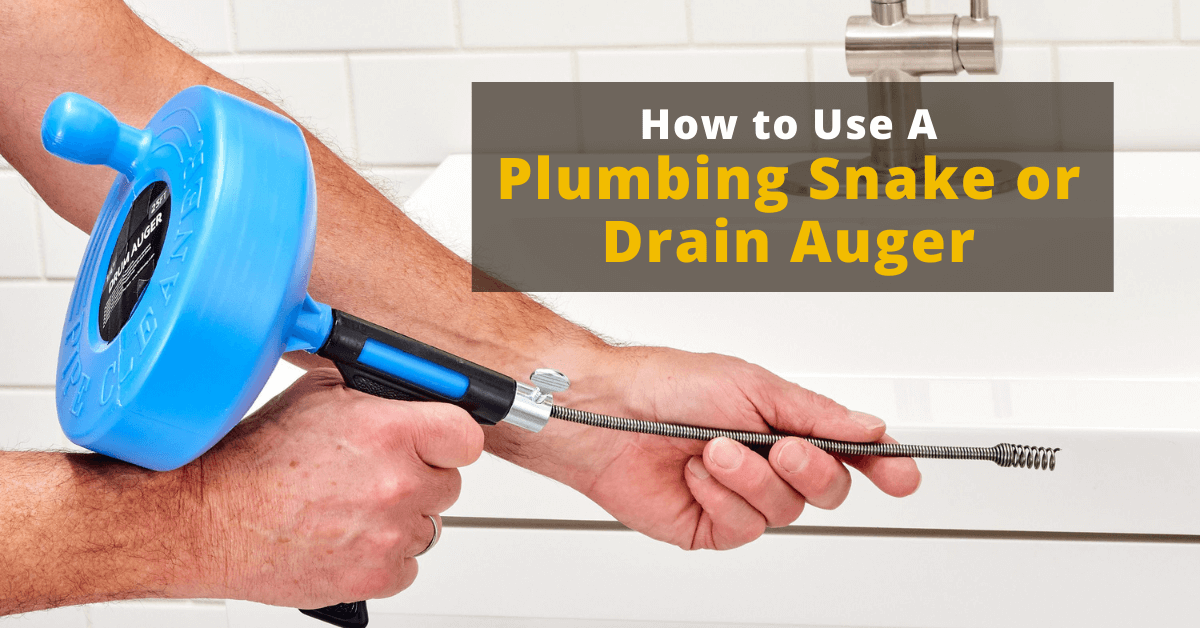Clogged drains are a common plumbing problem that you can fix with a drain auger or plumbing snake.
A clogged drain can be a real pain, usually caused by hair, grease, or food particles. If you don’t take care of the problem right away, the clog will only get worse and could eventually cause water damage to your home.
In this article, we will show you an effective way to fix a clogged drain using a drain auger or plumbing snake. These tools are easy to use, and they can quickly clear the clog from your drain, especially if a plunger is not working.
Before we proceed in showing you how to use a drain auger or plumbing snake, let’s take a quick look at what each of these tools are and what they can do.
4 Different Types of Drain Auger or Plumbing Snake
There are different types of plumbing snakes or drain augers, but they all serve the same purpose – to clear a clogged drain. Here are 4 common types of plumbing snakes or drain augers:
1. Manual cable drain snakes
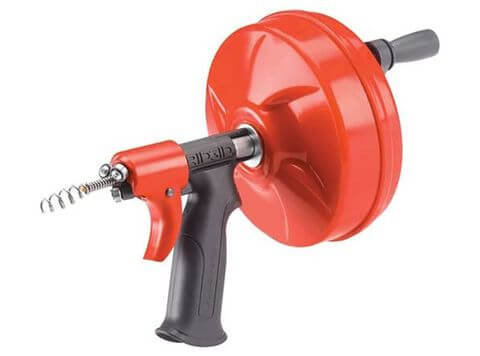
These are the most common type of plumbing snakes, and they are easy to use. You simply crank the handle to rotate the cable inside the drain. This type of plumbing snake is good for clearing light clogs in drains.
2. Flat tape snakes
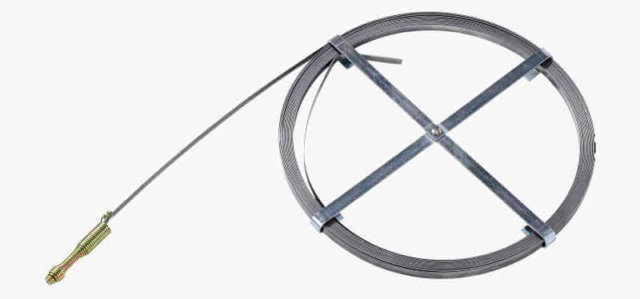
Flat tape snakes are also easy to use, and they can clear away light clogs in drains. They work by pushing the flat tape through the drain to break up the clog. This type of plumbing snake is suitable for removing hair and other small debris from drains. It has a thin, flat blade that slides easily down the drain pipe.
3. Power snakes
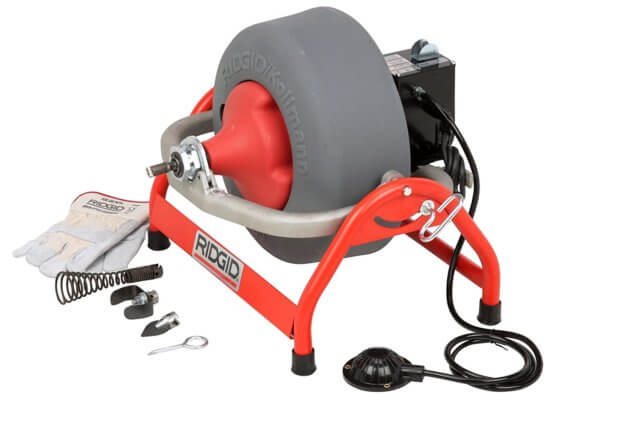
Power snakes are electric-powered drain snakes that can clear tougher clogs in drains. They have a motor that powers the cable to rotate and break up the clog. This plumbing snake is good for removing tree roots, grease, and other tough clogs from drains or sewer lines.
4. Toilet closet snakes

Toilet closet snakes are specially designed to clear clogs from toilets. They have a long, flexible cable that can reach deep into the bowl to remove the clog. This type of plumbing snake is good for removing hair, grease, and other small debris from toilets. If your toilet won’t flush, this would be the first solution to try aside from a plunger.
Now that you know the different types of drain augers or plumbing snakes let’s show you how to use them.
How To Use A Drain Auger or Plumbing Snake: Step by Step Process
The following steps will show you how to use a manual drain snake or auger:
Step #1:
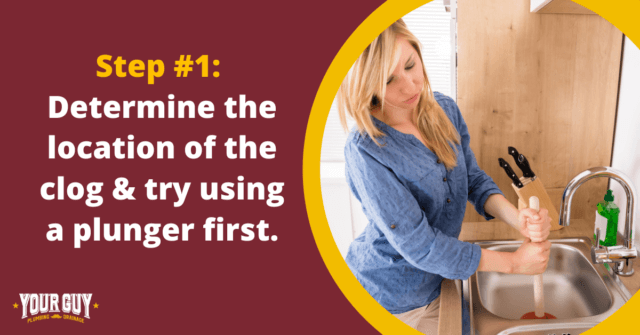
Locate the clogged drain. The clogged drain is usually located at the bottom of the drain pipe. If you are unsure where the blockage is, try using a plunger to clear the clog; proceed to the next step if it’s not working.
Step #2:
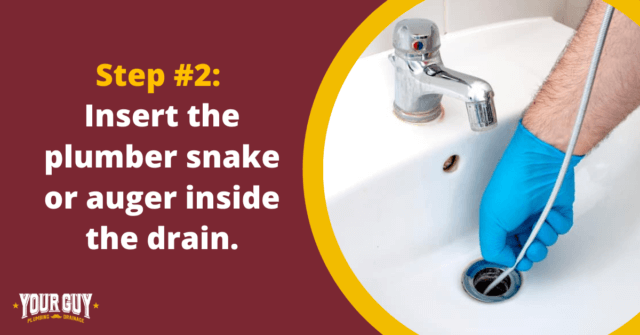
Insert the end of the cable into the drain pipe. The end of the cable should have a pointed hook on it that will help catch the clog.
Step #3:
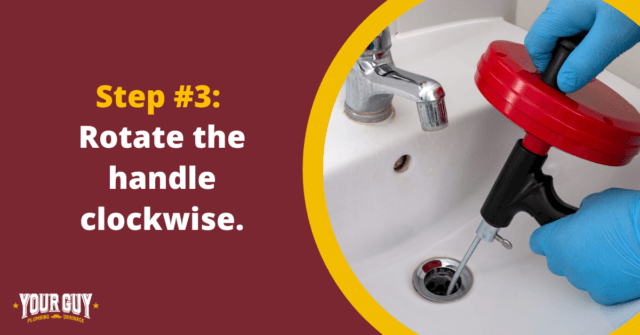
Turn the crank handle to rotate the cable inside the pipe. As you rotate the cable, it will help break up the clog and push it through the pipe.
Step #4:
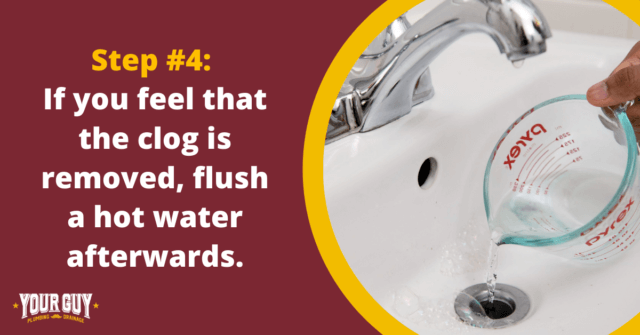
Continue rotating the cable until the clog is cleared. Remove the cable from the drain pipe and flush the drain with hot water to remove any residue.
Step #5:
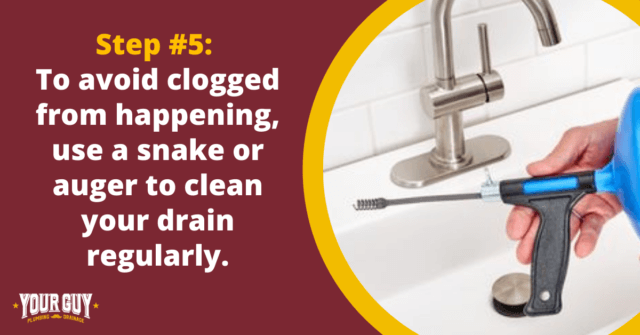
To avoid clogged drains from happening again, it is advisable to use a drain auger or plumbing snake monthly to clean your drains and prevent clogs from forming.
It is also important to be careful when using a plumbing snake or a drain auger, as these tools can damage your pipes if used incorrectly. If you are not sure how to use either of these tools, be sure to consult a professional plumber to clear your drains. You can learn more about our drain cleaning service here.
How to Prevent Clogged Drains
In order to prevent clogged drains, it is important to take care of them and not put anything down the drain that shouldn’t be there.
Here are a few tips for preventing clogged drains:
- Install a strainer on your sink drain to catch food particles and other debris.
- Don’t pour grease or cooking oil down the drain.
- Don’t put hair or other debris down the drain.
- Clean your drains regularly with a plunger or a plumbing snake.
If you follow these simple tips, you can help to prevent clogged drains and keep your drains clear and functioning properly.
Conclusion
Clogged drains are a common problem, but they can be easily fixed with a drain auger or a plumbing snake. These tools are easy to use and can be purchased at most hardware stores.
Be sure to consult a professional plumber if you are unsure how to use either of these tools. They will be able to help you clear the clog and get your drains functioning properly again. They may also suggest more efficient unclogging methods such as Hydro Jetting, wherein a powerful stream of water is used to clear stubborn clogs.
If you live in Lower Mainland Canada and require a dependable and experienced plumber to remove blockages from your drains, Your Guy Plumbing is ready to assist you 24/7. We offer a wide range of drain cleaning services, including:
- Hydro Jetting Services
- Kitchen Drain Cleaning
- Bathroom Drain Cleaning
- Sewerline Drain Cleaning
- Drain Tile Drain Cleaning
Contact us today, and we’ll be there to help you in no time!
Frequently Asked Questions
Can I snake my own drain?
Yes, you can snake your drain, but be careful not to damage your pipes. By following the steps mentioned above, you should be able to clear most clogs. If you are not comfortable or unsure of how to do it, consult a professional plumber for help.
How far should a snake go down a drain?
A drain snake is usually about 15 to 25 feet long. It should be inserted into the drain as far as possible in order to reach the clog, but be careful not to damage your pipes.

